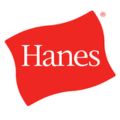
Overview
Gas detectors have diverse applications in the textile industry, enhancing safety, productivity, and environmental stewardship. Methane detectors are vital in manufacturing processes to monitor and manage emissions from dyeing and finishing, reducing greenhouse gas contributions. Ammonia sensors are crucial in processes involving synthetic fibers to ensure air quality, safeguarding worker health and productivity. Carbon dioxide monitors help optimize conditions in certain textile production environments, facilitating precise control of processes, and leading to improved efficiency. Additionally, gas detectors are used in storage facilities to detect harmful gases like carbon monoxide and fumigants, ensuring worker safety and material preservation. By integrating these gas detection technologies, the textile industry can improve operational efficiency, adhere to environmental regulations, and promote a healthier ecosystem.
Depending on specific features and functions, GAO Tek’s Other Gas Detectors are sometimes referred to as gas analyzers, gas sensors, gas monitors, air quality monitors, environmental gas detectors, and toxic gas detectors.
Furthermore, GAO Tek’s Other Gas Detectors are further grouped into: Alarm-Enabled, Handheld, High Precision, Data Logging, Outdoor, and Wireless
GAO Tek’s Other Gas Detectors have the following applications in the textile industry:
- Hydrogen Sulfide Detectors: GAO Tek’s other gas detectors are used to monitor and control hydrogen sulfide levels during the production of certain synthetic fibers, protecting workers from toxic exposure.
- Oxygen Detectors: GAO Tek’s other gas detectors are essential in environments where there is a risk of oxygen depletion due to chemical reactions, ensuring a safe working atmosphere.
- VOC Detectors (Volatile Organic Compounds): GAO Tek’s other gas detectors are crucial for detecting emissions from dyes, solvents, and other chemicals used in textile processing, thereby preventing health hazards and maintaining air quality.
- Formaldehyde Detectors: Important for detecting formaldehyde used in textile treatments and finishing processes, ensuring compliance with safety standards and protecting worker health.
- Nitrogen Dioxide Detectors: GAO Tek’s other gas detectors are used in operations involving combustion processes or high-temperature treatments, monitoring for harmful emissions and ensuring a safe workplace.
More information on other gas detectors and their applications in other industries can be found on Other Gas Detectors. This category page lists related products and Environmental
Systems in the Textile Industry Utilizing Other Gas Detectors
Here are some popular systems in the textile industry using other gas detectors:
Dyeing and Finishing Systems:
- VOC Detectors: Integrated into dyeing machines to monitor and control the release of volatile organic compounds from dyes and solvents, ensuring air quality and worker safety.
- Formaldehyde Detectors: Used in finishing processes to detect formaldehyde emissions, helping maintain safe exposure levels and regulatory compliance.
Synthetic Fiber Production:
- Ammonia Detectors: Employed in the production of synthetic fibers like nylon and polyester to monitor ammonia levels, preventing harmful exposure and ensuring process efficiency.
- Hydrogen Sulfide Detectors: Utilized in the production of certain synthetic fibers where hydrogen sulfide is a byproduct, safeguarding workers from toxic exposure.
Combustion and Heat Treatment Systems:
- Nitrogen Dioxide Detectors: Installed in high-temperature treatment and combustion systems to detect nitrogen dioxide emissions, protecting workers from harmful gases and maintaining a safe working environment.
- Carbon Monoxide Detectors: Used in boiler rooms and other combustion systems to monitor carbon monoxide levels, ensuring timely detection and prevention of potential poisoning incidents.
Storage and Handling Areas:
- Oxygen Detectors: Deployed in storage facilities where chemicals are kept, ensuring that oxygen levels remain safe and preventing asphyxiation risks.
- Carbon Dioxide Detectors: Used in areas where CO2 is stored or utilized, ensuring proper ventilation and worker safety.
Environmental Control Systems:
- Multi-Gas Detectors: Integrated into environmental control systems to continuously monitor a range of gases such as VOCs, ammonia, and formaldehyde, ensuring comprehensive air quality management and regulatory compliance.
GAO Tek’s targeted markets are North America, particularly the U.S. and Canada.
Complying with Government Regulations
GAO Tek’s other gas detectors comply or help our customers comply with the U.S. government regulations such as:
- OSHA (Occupational Safety and Health Administration)
- EPA (Environmental Protection Agency)
- NIOSH (National Institute for Occupational Safety and Health)
- MSHA (Mine Safety and Health Administration)
- USDA (United States Department of Agriculture)
- FDA (Food and Drug Administration)
GAO Tek’s other gas detectors comply or help our customers comply with the Canadian government regulations such as:
- CCOHS (Canadian Centre for Occupational Health and Safety)
- Environment and Climate Change Canada
- Health Canada
- CSA (Canadian Standards Association)
- Agriculture and Agri-Food Canada (AAFC)
- Canadian Grain Commission (CGC)
Case Studies of Other Gas Detectors in the Textile Industry
Other gas detectors are sometimes referred to as gas analyzers, gas sensors, gas monitors, air quality monitors, environmental gas detectors, and toxic gas detectors.
Here are some practical examples of using other gas detectors in the textile industry:
In the Northeast region of New York, VOC detectors are crucial for monitoring emissions from dyes and solvents in textile dyeing facilities. These detectors ensure compliance with stringent state environmental regulations, improving air quality and worker safety while optimizing the dyeing process to reduce chemical usage and costs.
In the Northeast region of Florida, textile plants utilize ammonia sensors to monitor and control ammonia levels during the production of synthetic fibers. These sensors enhance productivity, protect worker health, and help manufacturers comply with Florida’s environmental standards, which are among the strictest in the country.
In the Midwest region of Missouri, textile finishing facilities deploy formaldehyde detectors to monitor emissions from fabric treatments. These detectors are essential for maintaining safe formaldehyde levels, ensuring worker safety, and meeting regulatory requirements, thereby improving product quality and workplace safety.
In the Midwest region of Nebraska, textile manufacturing plants use oxygen detectors in their heat treatment ovens to maintain safe oxygen levels during curing processes. This practice prevents combustion hazards, ensures consistent product quality, and reduces energy consumption, enhancing overall operational efficiency.
In the Southern region of Florida, carbon monoxide detectors are critical in boiler rooms of textile facilities to detect and prevent carbon monoxide buildup. These detectors safeguard worker health and ensure compliance with safety regulations, enabling uninterrupted production.
In the ports of Texas and Louisiana, VOC detectors manage air quality in warehouses handling textile goods, while CO2 monitors optimize conditions in greenhouses growing plant-based textile raw materials. These measures improve product quality and ensure worker safety.
Textile plants in Alabama and Mississippi employ multi-gas detectors to monitor various gases such as ammonia, VOCs, and formaldehyde in processing areas. These detectors help maintain air quality, protect worker health, and ensure adherence to environmental regulations, promoting sustainable practices.
In the Western region of California, textile mills use ammonia and formaldehyde detectors to monitor air quality during fiber production and finishing processes. These detectors are vital for regulatory compliance, worker safety, and reducing environmental impact, aligning with California’s stringent environmental policies.
In the Western region of Nevada, the textile industry uses methane detectors to monitor and manage methane emissions in synthetic fiber manufacturing. This practice ensures safe operations and aligns with state regulations aimed at reducing greenhouse gas emissions.
In the Western region of Montana, carbon monoxide detectors are used in textile dyeing facilities to detect and prevent CO buildup from heating systems. These detectors enhance worker safety and ensure compliance with safety standards, contributing to a safer and more efficient production environment.
In the Canadian regions of Manitoba and Saskatchewan, textile processing facilities deploy ammonia sensors to monitor air quality, especially in processes involving synthetic fibers. These sensors prevent harmful exposure, ensuring worker safety and compliance with Canadian occupational health regulations.
In the Canadian region of the Arctic, textile storage facilities use carbon monoxide detectors to mitigate the risk of CO exposure during the storage and handling of textile goods. These detectors are crucial for worker safety and maintaining product integrity under extreme conditions.
In the Canadian region of Quebec, textile manufacturing plants use formaldehyde detectors to monitor and control emissions during fabric treatment processes. These detectors help safeguard worker health, minimize harmful emissions, and ensure compliance with Canadian environmental standards.
GAO RFID Inc. RFID Hardware, a sister company of GAO Tek Inc., is ranked as the top 10 RFID suppliers in the world. Its RFID, BLE, and IoT products have also been widely used in the textile industry. Articles about related industries are given below:
Textile, Fisheries and Forestry Industry
Use of Other Gas Detectors with Leading Software and Cloud Services in the Textile Industry
GAO Tek has used or has facilitated its customers to use GAO’s other gas detectors with some of the leading software and cloud services in their applications. Examples of such leading software and cloud services include:
- Amazon Web Services (AWS)
- Microsoft Azure
- Google Cloud Platform (GCP)
- SAP Cloud Platform
- IBM Cloud
GAO Tek’s other gas detectors and their applications in other industries are listed on Other Gas Detectors. Other related products can be found on this category page Environmental
Meeting Customers’ Demands
Large Choice of Products
In order to satisfy the diversified needs of their corporate customers, GAO Tek Inc. and its sister company GAO RFID Inc. together offer a wide choice of testing and measurement devices, network products, RFID, BLE, IoT, and drones.
Fast Delivery
To shorten the delivery to our customers, GAO has maintained a large stock of its products and is able to ship overnight within the continental U.S. and Canada from the nearest warehouse.
Local to Our Customers
We are located in both the U.S. and Canada. We travel to customers’ premises if necessary. Hence, we provide very strong local support to our customers in North America, particularly the U.S. and Canada.
Furthermore, we have built partnerships with some integrators, consulting firms, and other service providers in different cities to further strengthen our services. Here are some of the service providers in the textile industry, we have worked with to serve our joint customers:
- John Deere
- Bayer Crop Science
- BASF
- Syngenta
- Corteva Agriscience
- Monsanto
- Archer Daniels Midland (ADM)
- Cargill
- DuPont Pioneer
- Yara International
- Agrium
- The Mosaic Company
- Dow AgroSciences
- Nutrien
- Agco Corporation
- Deere & Company
- Valmont Industries
- Kubota Corporation
- CNH Industrial
- AGCO Agriculture
GAO has Many Customers in the Textile Industry
The products from both GAO Tek Inc. and GAO RFID Inc. have been widely used in the textile industry by many customers, including some leading companies. Here is more information on applications of GAO RFID Inc.’s products in the textile industry. Articles about related industries are given below:
Textile, Fisheries and Forestry Industry
Here are some of GAO’s customers in the textile industry:
- Hanesbrands Inc.
- Levi Strauss & Co.
- Nike, Inc.
- Adidas AG
- H&M Group
- Zara (Inditex)
- Gildan Activewear Inc.
- Under Armour, Inc.
- Lululemon Athletica
- Fruit of the Loom
- American Apparel
- Brooks Brothers
- VF Corporation
- Perry Ellis International
- DyeTech Enterprises


















Contact Us
Here are GAO Tek’s other gas detectors and they are further organized by feature:
alarm-enabled, handheld, high precision, data logging, outdoor, and wireless.
If you have any questions about our products or want to place an order, our technical experts can help you. Please fill out this form or email us.
